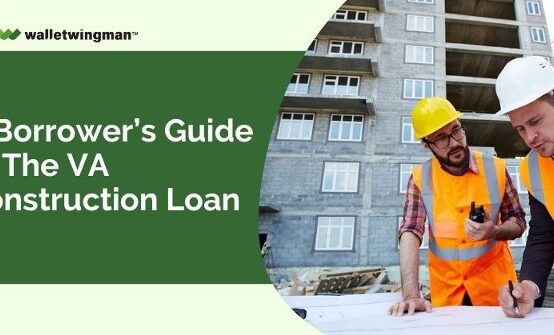Home buyers who use the VA home loan program to buy a house are often surprised to learn that there’s not just one type of VA-backed mortgage loan. You have several choices to make when applying for one of these mortgages.
One of those choices has to do with the length of the repayment term.
If you use a fixed-rate VA loan to buy a house, you could choose between a 15-year or 30-year term. Both of these options have specific pros and cons.
This article will take you through the advantages of using the more popular 30-year term and the benefits of the shorter 15 year VA loan option.
Understanding VA Loans

Veterans, active-duty military personnel, and some members of the National Guard and Reserves can get advantageous conditions for homeownership through VA loans, which are supported by the Department of Veterans Affairs.
Private mortgage insurance (PMI) exemption, reasonable interest rates, and no down payment restrictions are just a few advantages of these loans.
Compared to traditional loans, these loans have more flexible VA loan credit requirements. By utilizing the advantages offered by this government-backed program, borrowers may maximize their ability to finance their homes by being knowledgeable about the nuances of VA loans and making more informed selections.
Nonetheless, a borrower’s financial destiny may be significantly impacted by their choice between a 15-year and 30-year loan term.
Some Terminology You Need to Know

Let’s start with a quick terminology review. Here are some of the most important terms used throughout this guide.
VA Loan:
The U.S. Department of Veterans Affairs (VA) guarantees this type of mortgage loan and National Guard VA loan. It’s designed to help eligible veterans, active-duty service members, and certain surviving spouses purchase homes with favorable terms, such as no down payment or private mortgage insurance.
Term:
The term of a 15 vs 30 year mortgage loan refers to the duration over which the borrower agrees to repay the loan. It’s typically expressed in years, such as 15 or 30 years. The term determines the monthly payments the borrower will make to pay off the loan over time.
Amortization:
Amortization is gradually paying off a debt, such as a mortgage loan, through regular payments over a specific period. Each payment covers the interest charged on the remaining balance and a portion of the principal (the original loan amount). Over time, the balance decreases until the loan is fully paid off.
VA Loans Can Have Either a 15- or 30-Year Term

The U.S. Department of Veterans Affairs publishes a handbook geared toward home buyers. It’s called the “VA Home Loan Guaranty Buyer’s Guide,” you can find a PDF copy online just by searching the title.
In addition to covering other essential topics, this handbook explains the different term lengths you can choose when using a VA loan:
“A loan term refers to a loan’s length of time and feature. VA can back loans that are either 15 or 30-year terms. Also, terms include fixed-rate and adjustable-rate mortgage (ARM).”
This quote covers two critical points:
- If you use a VA-guaranteed mortgage loan to buy a home, you can choose an adjustable-rate mortgage (ARM) loan or the more popular fixed-rate option.
- A 15-year amortization/repayment period or the lengthier and more common 30-year term are your options if you select a fixed-rate loan.
The standard 30-year fixed-rate mortgage loan is the most popular financing choice among home buyers in the United States. Even so, you’ll want to explore your options and choose the proper loan structure for your particular needs.
Pros and Cons of Both Options

Different loan terms bring different pros and cons into the picture. To make an informed selection, it is essential for borrowers to comprehend both the benefits and drawbacks.
Here are the pros and cons of both the 15-year and 30-year VA loans:
Pros of a 15-Year Mortgage
- Lower interest rate: You typically get lower 15-year mortgage rates compared to a 30-year loan. This translates to significant savings on interest over the life of the loan.
- Faster payoff: By cutting the amortization window in half, you can pay off your VA loan (and fully own the home) much sooner.
- Builds equity faster: Since you’re paying more monthly principal, you’ll build equity in your home faster. This can be beneficial if you need to sell your house down the road or want to use a home equity loan.
Cons of a 15-Year Mortgage
- Higher monthly payments: You will pay more each month for the same amount of money borrowed under this shorter payback period than you would under a 30-year loan. This can put pressure on your finances.
- Less flexibility: A more significant chunk of your income goes towards your mortgage payment, leaving less room for other expenses or unexpected costs.
- Qualification challenges: Getting approved for a 15-year loan may be more difficult for specific borrowers with higher monthly payments. The higher payment may cause some applicants to exceed the permitted threshold since lenders closely examine borrowers’ debt-to-income (DTI) ratios.
Pros of a 30-Year Mortgage
- Lower monthly payments: This is by far the most significant benefit. If you take out a loan for the same amount over 15 years, your monthly payment will be less. Cash flow for other needs or savings objectives is therefore freed up.
- More flexibility: You may more easily handle other financial responsibilities and have more financial breathing room in your budget with a smaller payment.
Cons of a 30-Year Mortgage
- Higher interest rate: You’ll likely pay a higher interest rate on a 30-year VA loan than the 15-year option. This means you’ll end up paying much more in interest over the life of the loan.
- Slower equity build-up: You’ll build equity in your home at a slower pace because a more significant portion of your initial payments go towards interest.
- Longer debt: It takes twice as long to pay off the VA loan, meaning you’ll be tied to a mortgage payment for a more extended period.
How to Choose the Right Option for You
When using a VA loan to buy a house, you must go through the VA loan application process and should consider your financial situation and long-term housing goals. This kind of soul-searching will help you choose the better option between the 15-year and 30-year VA loan terms.
It comes down to a matter of priorities:
If you prioritize paying off your home faster and saving on interest, a 15-year mortgage might be a good option. Make sure you can comfortably handle the higher monthly payments.
If you need to keep your monthly housing costs lower for more financial flexibility, a 30-year mortgage may be preferable. Remember, though, that you’ll pay more in interest over time. It’s a tradeoff.
Factors to Consider When Choosing Between 15-Year and 30-Year VA Loans
Borrowers should think about a number of things before choosing between a 15-year and 30-year VA loan.
Future Plans:
The details that may be deemed crucial when determining between the 15-year and 30-year VA loan include your plans for the future, including your career, family, and location.
If you think you will have a predictable job in the next 15 years, which will provide you with a stable income, then you can agree that a 15-year loan will be easy to repay and help you build up equity efficiently.
In cases where one is planning to start a family or get a new job with a new city, a 30-year mortgage can provide lower monthly payments that can act as a buffer for such changes. Considering your long-term goals and how you propose to meet your financial obligations is an excellent way to make a good decision.
Risk Tolerance:
It is crucial to understand the level of risk that you are willing to take before choosing between a 15-year and a 30-year VA loan.
A 15-year loan is more expensive and requires monthly payments, which puts it on the line since it translates to a more significant risk given the uncertainties in our current income levels.
Due to these factors, this option is preferable for those confident that they have a stable financial position and can afford higher payments.
However, a loan for 30 years is more affordable as it carries reasonable monthly costs, thus lessening the financial burden and the risk involved if the economy or the individual is in a worse state. This prompts understanding your tolerance to economic risks, which is crucial in determining the proper VA business loan requirements.
You’ll see yourself in one of the above statements—but not both. Choose the scenario that more closely reflects your mortgage financing priorities, and you’ve got your winner!
Bottomline
Each of the 15-year and 30-year VA loans has its advantages and disadvantages, as discussed above.
A 15-year loan is suitable for clients willing to pay higher monthly amounts and desiring to save interest costs and gain equity as soon as possible. On the one hand, a 30-year loan has reduced monthly payments, increased purchasing power, more accessible lending standards, and reduced equity accumulation but higher total interest.
It is, however, essential to consider the financial capacity, expected future earnings, and personal desire when choosing between the two. As with any loan, it is crucial to consider your budget, discuss the options with your financial advisor, and consider your potential plans when deciding on the term length.



 A Borrower’s Guide to the VA Construction Loan
A Borrower’s Guide to the VA Construction Loan  How to Buy a Condo Unit with a VA Mortgage Loan
How to Buy a Condo Unit with a VA Mortgage Loan  How Much Can I Borrow When Using a VA Loan to Buy a House?
How Much Can I Borrow When Using a VA Loan to Buy a House?  The VA Cash-Out Refinancing Process Explained
The VA Cash-Out Refinancing Process Explained  What Information Is Needed for a VA Loan?
What Information Is Needed for a VA Loan?  7 Potentially Costly VA Loan Mistakes, and How to Avoid Them
7 Potentially Costly VA Loan Mistakes, and How to Avoid Them 